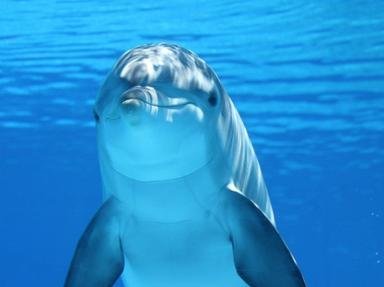Quiz Answer Key and Fun Facts
1. Jellyfish are ever-hungry for which type of watery food?
2. Sea otters, like some seals, don't mind the hard work it takes to eat which of these watery and challenging foods?
3. Since shrimp eat dead animals, this puts them where on the marine life food chain?
4. The sea cow, dugong, hungrily grazes on which of these?
5. Small squid frequently organize into savage hunting groups.
6. Biggest of the turtles, protected by its shell, the Pacific leatherback sea turtle migrates about 6,000 miles (9,700 km) from Indonesia to California, hungry for what?
7. There's a new food in Sea Town. What man-made handy-dandy product is filling the stomachs of a great many sea creatures?
8. With razor sharp teeth, extra-long claws and a reptilian face, the marine iguana is a sinister sight. But it only basks on the beach, then takes an extended ocean dip for a snip of what?
9. Crabs are one of the few creatures that can eat a seahorse.
10. Amazon river dolphins have excellent eyesight, yet they most often use which reverberation to locate food?
Source: Author
Godwit
This quiz was reviewed by FunTrivia editor
guitargoddess before going online.
Any errors found in FunTrivia content are routinely corrected through our feedback system.

